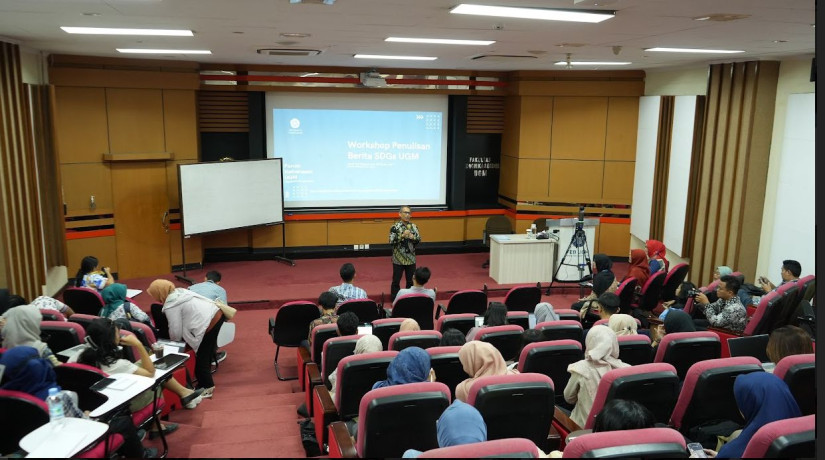
In the era of information openness, Universitas Gadjah Mada (UGM), as an educational institution, is responsible for presenting accurate and relevant information regarding its achievements to the public.
Ensuring public information openness not only means realizing the mandate of Law Number 14 of 2008 but also serves as UGM’s commitment to achieving good governance and guaranteeing human rights in accessing news.
In line with this, on Tuesday (Apr. 30), in commemoration of National Information Openness Day, UGM once again demonstrated its commitment to supporting healthy public information openness by holding an SDGs News Writing Workshop at the UGM Faculty of Economics and Business (FEB UGM).
The workshop was attended by 90 public relations staff within UGM’s working environment and signifies UGM’s concrete step to support and encourage transparency in providing relevant public information to the community.
UGM Secretary Dr. Andi Sandi Antonius Tabusassa Tonralipu mentioned that he hopes the PR staff at UGM will gain new insights and knowledge to enhance their news writing skills through this news writing workshop, thus supporting the Sustainable Development Goals (SDGs) agenda.
“Public relations plays a crucial role in maintaining UGM’s image as a higher education institution with a strong commitment to sustainable development principles,” he expressed.
Similarly, the Vice Dean for Research, Community Service, Cooperation, and Alumni of FEB UGM, Dr. Gumilang Aryo Sahadewo, stated that collaboration in reporting and content development across faculties and units can be one way to support UGM’s transformation into a sustainable campus.
The workshop’s speaker, Fernan Rahadi, the Head of Republika Bureau for DIY, Central Java, and East Java, mentioned that understanding the inverted pyramid principle in news writing is the best recipe for writing articles.
Unlike other types of writing that place the introduction at the beginning and the conclusion at the end, the inverted pyramid emphasizes a news article’s structure where vital information is used as a lead, followed by supporting contextual and general details.
“With this concept, readers can immediately capture information from the opening paragraph. Make sure to conduct research before writing news, provide facts as information for readers, and avoid inserting personal opinions,” he explained.
Authors: Triya Andriyani and FEB UGM/Kurnia Ekaptiningrum
Editor: Gusti Grehenson

